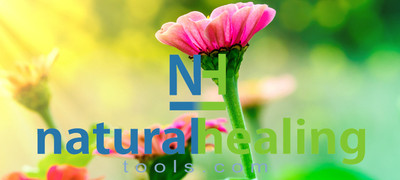Time to be inspired to perfect your gardening fertilization ....
Apr 10th 2017
March is a busy time for most gardeners, who must “spring” into gardening to ensure a bountiful harvest come summertime. Although this has been one of the warmest winters in recent years around the country, many parts of the U.S. still experienced harsh weather and frost.
Although spring doesn’t officially start until later on in March, it is a good time to start working on your garden as the frost is likely loosening up in the southern parts of the country. Check out Dr. Willard’s® March to do list to see what you should concentrate on this month.
Test Your Soil
Soil varies depending on the type in your garden, it’s pH levels, micro and macronutrients and acidity. Flowers and plants prefer a specific type of soil; the only way to make sure your garden has the right type is to perform a test of your soil.
This is an inexpensive process, typically less than $30, but can provide you with insightful information about the nutrient levels of your soil, as well as alert you to any unhealthy levels of arsenic, lead or other toxic metals that can be found in soil, especially in urban environments.
A soil test can provide you with advice on what amendments your soil can benefit from for your gardening needs. You can purchase do-it-yourself kits at local gardening stores or send soil samples to labs that can provide more detailed information and recommendations.
Know Your Hardiness Zones
As the U.S. is a big country, gardening recommendations vary based on the region you reside in. Check the map of the USDA Plant Hardiness Zones guide to find your zone, and what plants will thrive in your area. Understanding gardening guides and tips for your area will help you save time and money by planting the right things at the right time. Here are general tips on March gardening by part of the country:
Pacific Northwest
- Mulch
- Hunt slugs and set maggot traps
- Deadhead early bloomers
- Start seeds indoors
Midwest
- Start seeds indoors
- Prune shrubs
- Spray fruit trees
Mid-Atlantic
- Prune roses
- Don’t plant bulbs, tubers, shrubs, fruits or vegetables until the last expected frost
Northeast
- Start seeds indoors
- Remove mulch at the end of March
Southwest
- Pull mulch back
- Start growing melons, peppers and tomatoes indoors
- After last frost, plant corn, potatoes and beets outside
Southeast
- Plant cool season vegetables, like peas, cabbage and chard
- Plant cool season flowers and berries
- Start warm season vegetable seeds, like tomatoes and peppers indoors
Utilize PlantCatalyst®
Stock up on PlantCatalyst® in order to perfect your gardening routine. This is a safe and effective agricultural product that contains all natural ingredients and no harmful toxins. While many fertilizers can help you maximize yield, they also pollute groundwater and contribute to harmful greenhouse gases that deplete our ozone layer.
 PlantCatalyst® helps gardeners grow a more plentiful and abundant
harvest earlier in the season, while minimizing toxins from fertilizers
and saving money on fertilizer use. Just a small amount of our signature
product can help you cut fertilizer use by 50 percent!
PlantCatalyst® helps gardeners grow a more plentiful and abundant
harvest earlier in the season, while minimizing toxins from fertilizers
and saving money on fertilizer use. Just a small amount of our signature
product can help you cut fertilizer use by 50 percent!
Purchase PlantCatalyst®
PlantCatalyst is available in 2 sizes - 32 oz and 1 gallon.
NOTE: PlantCatalyst® is not designed to replace your nutrients/fertilizer but rather to serve as an addition to your normal nutrient/fertilizer routine. However, PlantCatalyst® will significantly increase the plant’s ability to utilize nutrients so you may want to reduce the amount of fertilizer you’re using by 30-50% if applying PlantCatalyst®.
Read specific directions but generally 1 oz dilution to 1 gallon.

